Kaserne History
2nd Battalion 61st FA Regiment
of the Grand Duke of Hessen
______________________________________
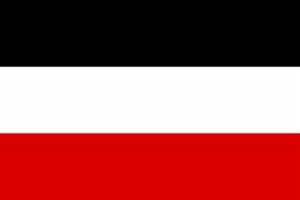
The flag of the German Empire from 1871 - 1918
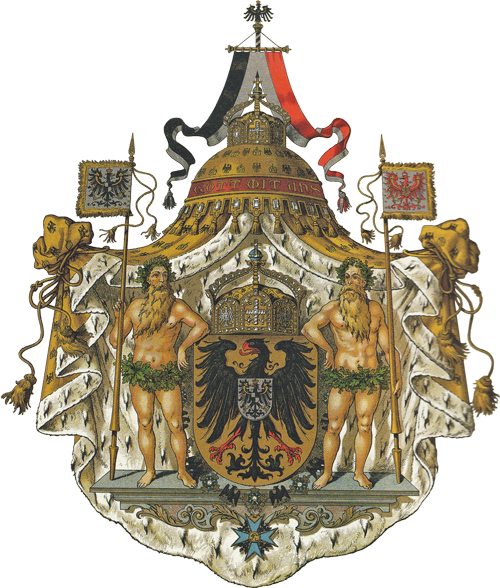
The Grand Coat of Arms of his Majesty the Kaiser
1871 - 1918

The Small Coat of Arms of his Majesty the Kaiser
1871 - 1918
_____________________________________
All photos © HGV Babenhausen
______________________________________

The flag of the German Empire from 1871 - 1918

The Grand Coat of Arms of his Majesty the Kaiser
1871 - 1918

The Small Coat of Arms of his Majesty the Kaiser
1871 - 1918
_____________________________________
All photos © HGV Babenhausen
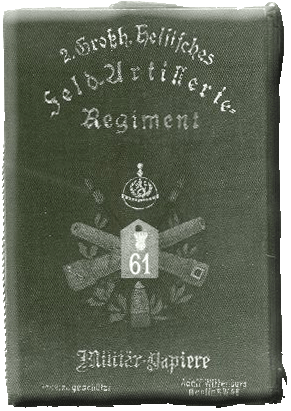
A pay book (Soldbuch) of a soldier of the 2/61 FA.
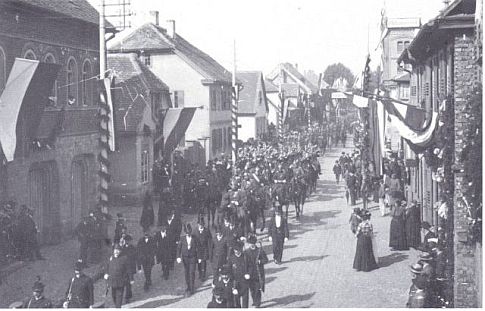
German soldiers had their personal records and all war postings in these books.

The 2nd Battalion 61st Field Artillery Regiment arrives at Babenhausen.
-October 1 1901-
-October 1 1901-
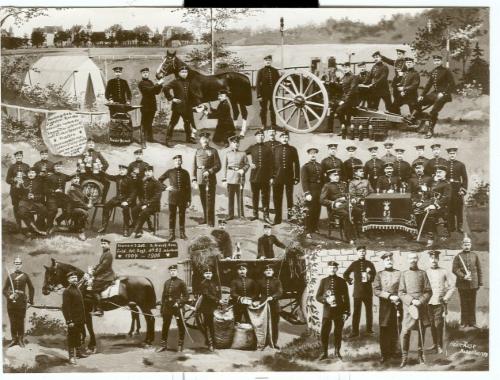
A picture postcard showing the 2/61
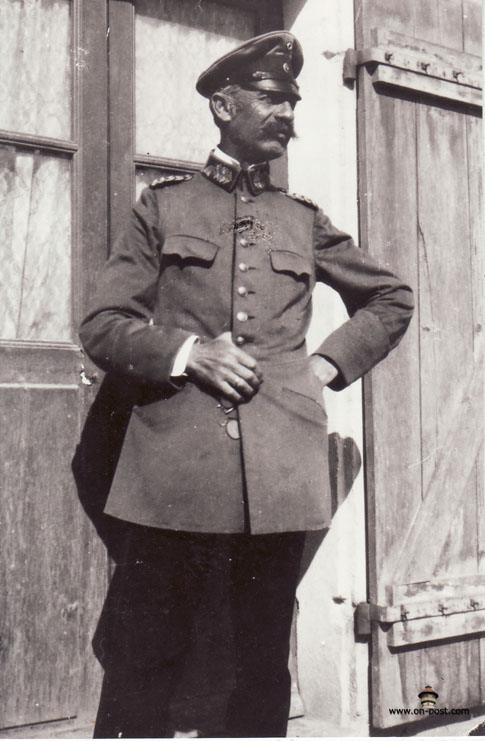
Major Richard Friese
Commander of the 2/61st FA.
-1903-
Commander of the 2/61st FA.
-1903-
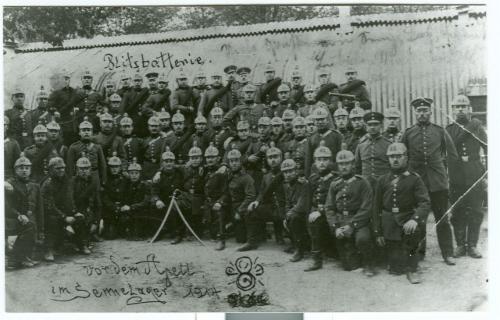
A "Blitzbattery" of the 2/61 in 1914
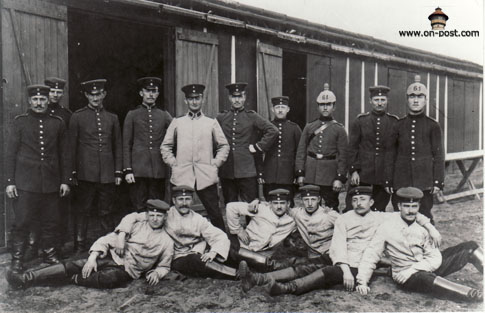
Soldiers of the 61 FA at Babenhausen
-1914-
-1914-
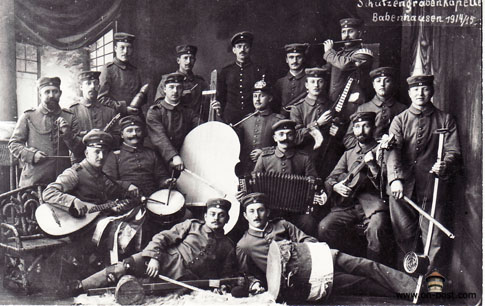
Musicians of the 61st Fa.
1914/15
_____________________________________
WORLD WAR I 1914-1918
"the war to end all wars"
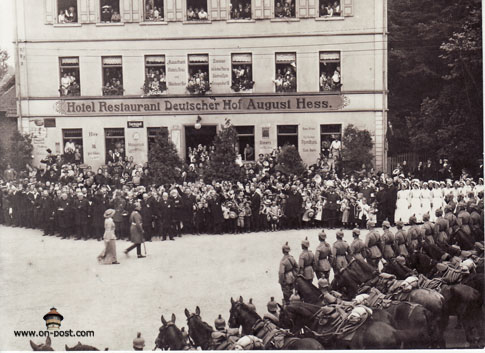
-August 7th 1914- WAR!!
Grand Duke Ernst Ludwig of Hessen and his Wife sees off the 61st Fa Regiment. The Regiment was off to France and would return back to Babenhausen in 1918 to be deactivated.
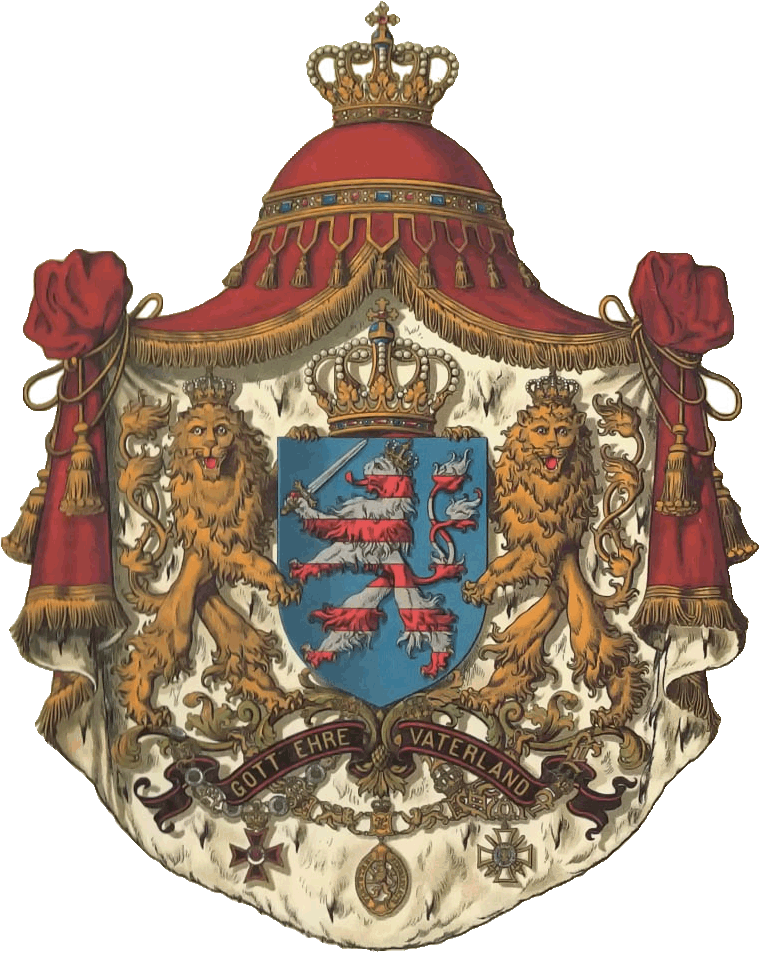
The Coat of Arms of the State of Hessen
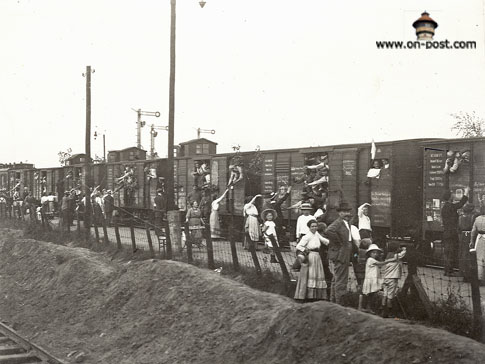

A Battery of the 2/61 somewhere in France
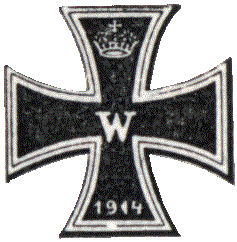
Grand Duke Ernst Ludwig of Hessen and his Wife sees off the 61st Fa Regiment. The Regiment was off to France and would return back to Babenhausen in 1918 to be deactivated.

The Coat of Arms of the State of Hessen

-Going to War-
The 2/61 FA leaves for France per train in August 1914.
Leaving behind loved ones with the motto "we will be back by Christmas", they would return in 1918 after a long and bloody war.
The 2/61 FA leaves for France per train in August 1914.
Leaving behind loved ones with the motto "we will be back by Christmas", they would return in 1918 after a long and bloody war.
2/61 FA was deactivated in 1919.

A Battery of the 2/61 somewhere in France
Regimental Linage of the Großherzoglich Hessische (25.) Division 2. Großherzoglich Hessisches Feldartillerie-Regiment Nr. 61 during World War 1 20.08.1914: Battle of Longlier 22.08.–23.08.1914: Battle of Neufchâteau 22.08.1914: Battles of Maissin, Anloy, Bertrix, Ochamps 23.08.1914: Bois de Saupont, Nouvelly des Loups 24.08.–29.08.1914: Battle of the Maas 24.08.1914: Matton 26.08.1914: Brévilly 27.08.1914: Villers devant Mouzon 28.08.1914: Autrecourt 30.08.–05.09.1914: deployed from the Maas to the Marne 31.08.1914: Sy 02.09.1914: Beaurepaire und Olizy 04.09.1914: Herpont 05.09.1914: Vanault les Dames 06.09.–12.09.1914: Battle of Marne 06.09.1914: Etreppy, Pargny, Alliancelles 07.09.1914: Pargny, Sermaize 08.09.1914: Cheminon la Ville 08.09.–09.09.1914: Maurupt et le Montoy, Pargny 10.09.1914: Maurupt et le Montoy 15.09.–22.09.1914: Reims 23.09.–06.10.1914: Battles in the Somme region 10.10.1914–18.10.1915: Battles near Roye 29.10.–02.11.1914: Le Quesnoy 05.11.–04.12.1914: Battles in the Fouquescourt and near the Route d'Amiens 20.12.1914–08.02.1915: Battles in the Avre sector and Beuvraignes 09.02.–18.10.1915: Battles in the Lihons and Parvillers regions 20.10.1915–31.01.1916: Rear area. R&R 02.02.–20.02.1916: Battles of Verdun 21.02.–28.04.1916: Battle of Verdun 22.02.1916: Capture of the Caures-Forrest (Verdun) 24.02.1916: Capture of Beaumont 25.02.–26.02.1916: Capture of Louvemont-Lines and the Pfefferruecken 27.02.–21.03.1916: Battles of the Chauffour- und Albain-Forrests 11.04.–28.04.1916: Battle of Fort Douaumont 17.05.–10.09.1916: Battle in the Aisne region 13.09.–01.10.1916: Battle of the Somme 05.10.–14.11.1916: Fighting in the Maas und Mosel regions; Battles in the Maashights and Spada, St. Mihiel, and in the Apremont und Ailly forrests. 09.12.1916–15.03.1917: Fighting in the Somme 16.03.–04.06.1917: Battle of the Siegfriedfront 27.06.–10.09.1917: Battle of the Siegfriedstellung 21.09.–12.10.1917: Fall Battles in Flanders 14.10.–06.11.1917: Borderprotection in the Belgum & Holland borders. 15.11.–03.12.1917: Battle of Flanders 04.12.1917–20.03.1918: Training and R&R for the "Great Battle of France" 21.03.–06.04.1918: the "Great Battle of France" 21.03.–22.03.1918: Breakthrough between Gouzeaucourt and Vermand 23.03.–26.03.1918: "Mopping up" in the Somme region 24.03.1918: Fighting near Bouchavesnes and the capture of the Marières-Forrest 25.03.1918: Capture of the Maurepas hights 27.03.–29.03.1918: Fighting near Cérisy and Morcourt 07.04.–18.04.1918: Fighting in the Ancre, Somme und Avre regions. 20.04.–17.07.1918: Fighting in Flanders 05.08.–10.08.1918: Ypern-La Bassée 22.08.–02.09.1918: Battle of Albert-Péronne 03.09.–10.09.1918: Fighting near the Siegfriedfront 08.09.–10.09.1918: the defence of Cambrai und St. Quentin, 15.10.–26.10.1918: Battle of the Hermannstellung 29.10.–04.11.1918: Fighting for Valenciennes 05.11.–11.11.1918: Retreating from the Antwerpen-Maas-Lines 12.11.1918–11.01.1919: Retreating from France, returning to Darmstadt and Babenhausen deactivation in 1919.... |

German Iron Cross
Falsely seen as a Nazi Decoration,
the Iron Cross was actually first instated in 1814
All photos: source Internet
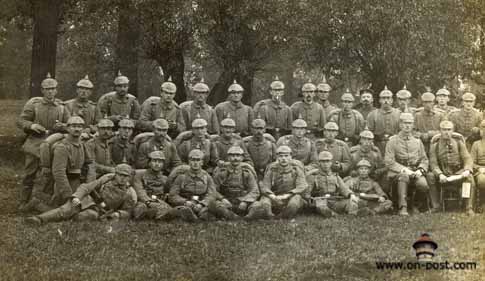
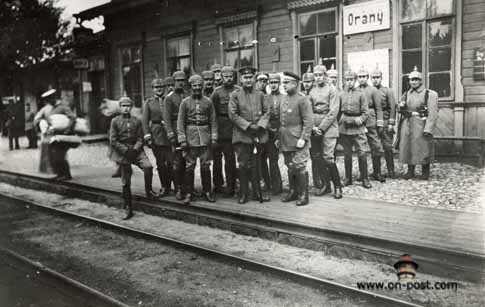
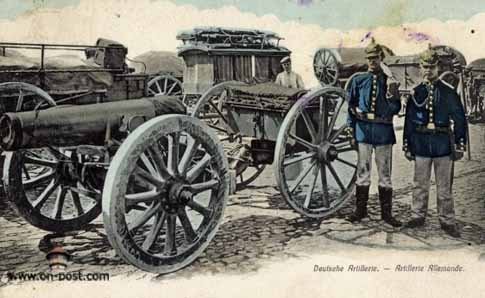
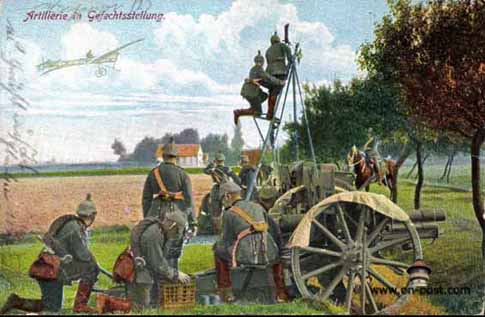
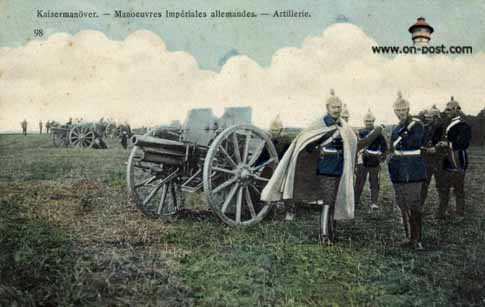
Falsely seen as a Nazi Decoration,
the Iron Cross was actually first instated in 1814
All photos: source Internet





_________________________________________
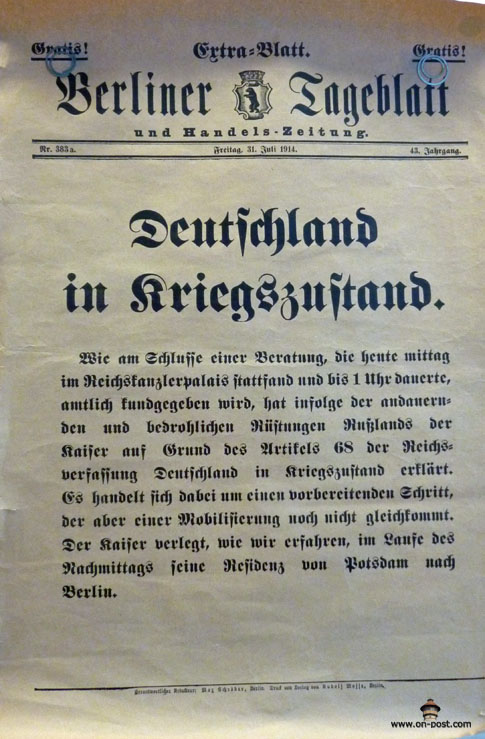
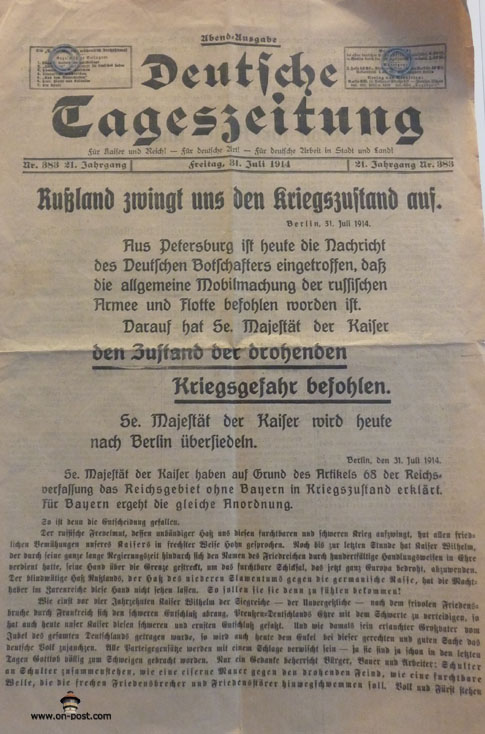
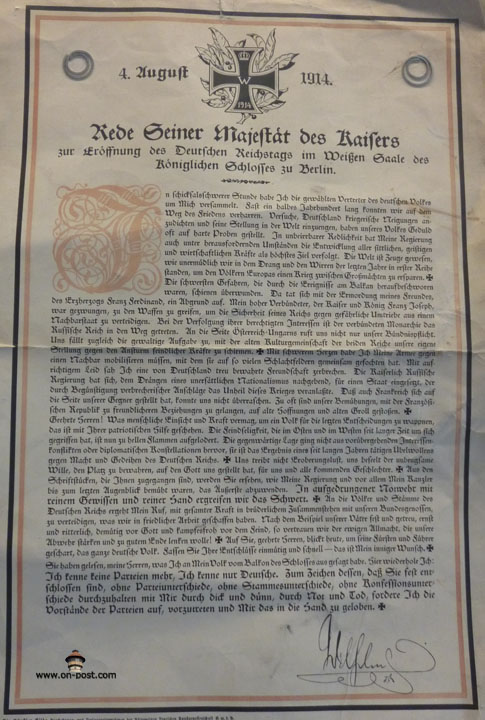
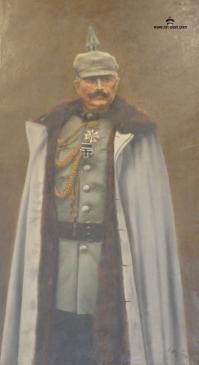
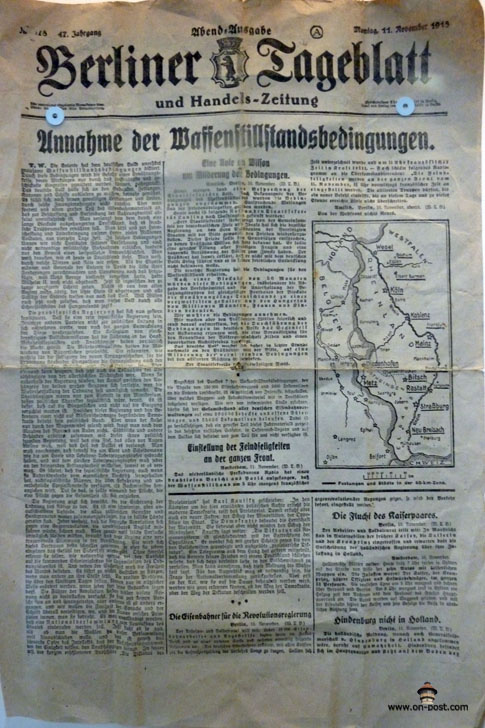
News from 1914 - 1918
All photos © on-post.com

On the eve of the war declaration on Russia
July 31st 1914
July 31st 1914

• August 1: Germany, an ally of Austria-Hungary, declares war on Russia and demands the neutrality of Russia's ally France;France refuses and mobilises.
• August 3: Germany declares war on France.
• August 4: Germany invades neutral Belgium, as per the Schlieffen plan to knock-put France; Britain responds by declaring war on Germany.
Thus starting a long and bloody war......
• August 3: Germany declares war on France.
• August 4: Germany invades neutral Belgium, as per the Schlieffen plan to knock-put France; Britain responds by declaring war on Germany.
Thus starting a long and bloody war......

The Proclamation from German Kaiser Wilhelm II
addressing the German Reichstag in Berlin
August 4th, 1914
Click here to SUPERSIZE
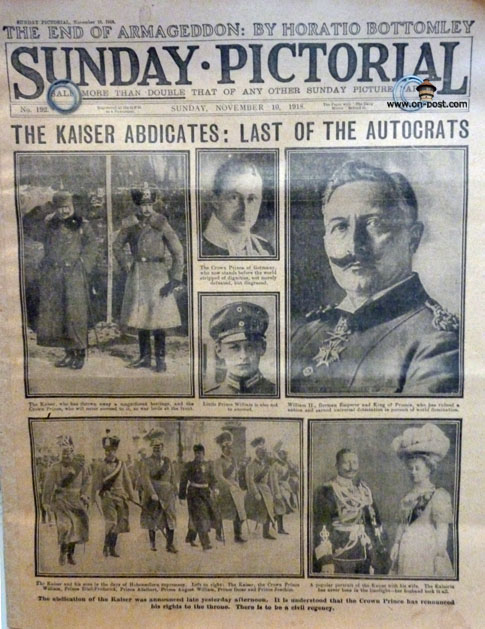
addressing the German Reichstag in Berlin
August 4th, 1914
Click here to SUPERSIZE

The Kaiser would leave Germany for Holland, never to return to Germany, he died in Holland while in exile in 1941

Portrait of Kaiser Whilhelm II

Armistice came into effect at the;
11th hour,
of the 11th day,
of the 11th month
of 1918
Ending WWI
All photos taken at the Museum Historial De La Grande Guerre
Peronne France
_______________________________________________________
All photos taken at the Museum Historial De La Grande Guerre
Peronne France
_______________________________________________________
Standard German Field Artillery in WWI
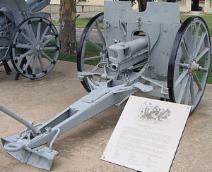
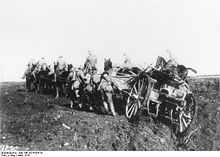
2/61 used the standard 7.7 cm FK 96 field gun. Later on, the longer ranged, but heavier FK 16-7.7cm field gun was used.
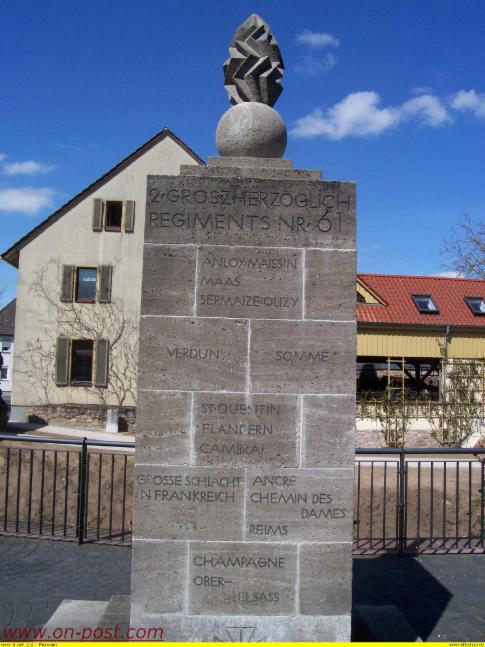
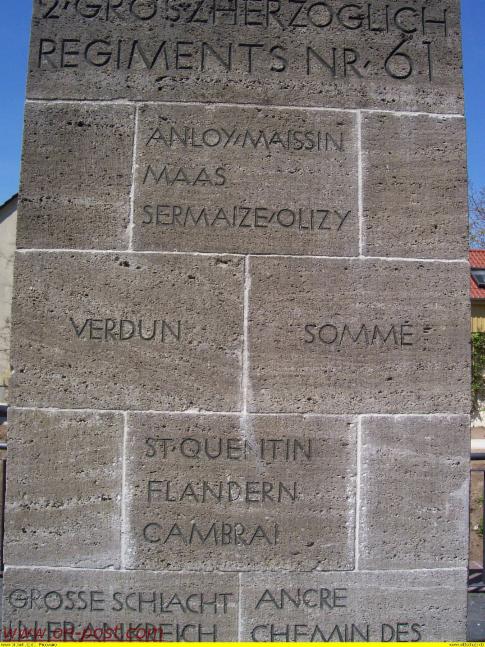
The Verdun and Somme battles were the bloodiest in the 20th century, summing up to 1.8 million casualties in both battles.
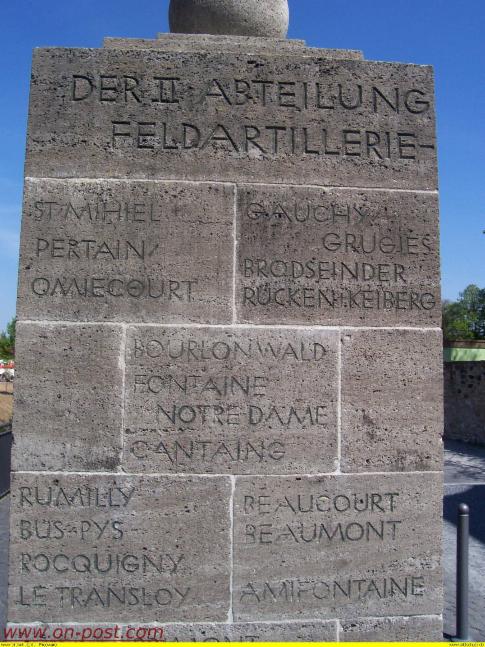
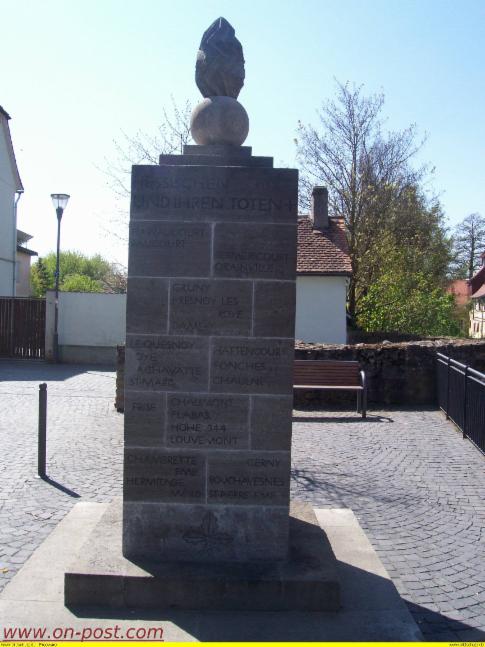
__________________________________
| "This is a war to end all wars" American President Woodrow Wilson (Wilson made the strophe famous, but he was not the first one who used it - the British novelist H.G. Wells invented it) "Only the dead have seen the end of war" George Santayana, Spanish-American philosopher, in a counter to Wilson's words |
___________________________________________________________________
Graphics, Articles and photos on this
web site are posted by permission of their owners and are for viewing
only. They are not for general distribution, nor for use on other
websites, unless permitted by the web master or the original owner. If
you find any files on this site that you believe are unauthorized,
please contact the web master immediately so that the issue can be
resolved.
___________________________________________________________________